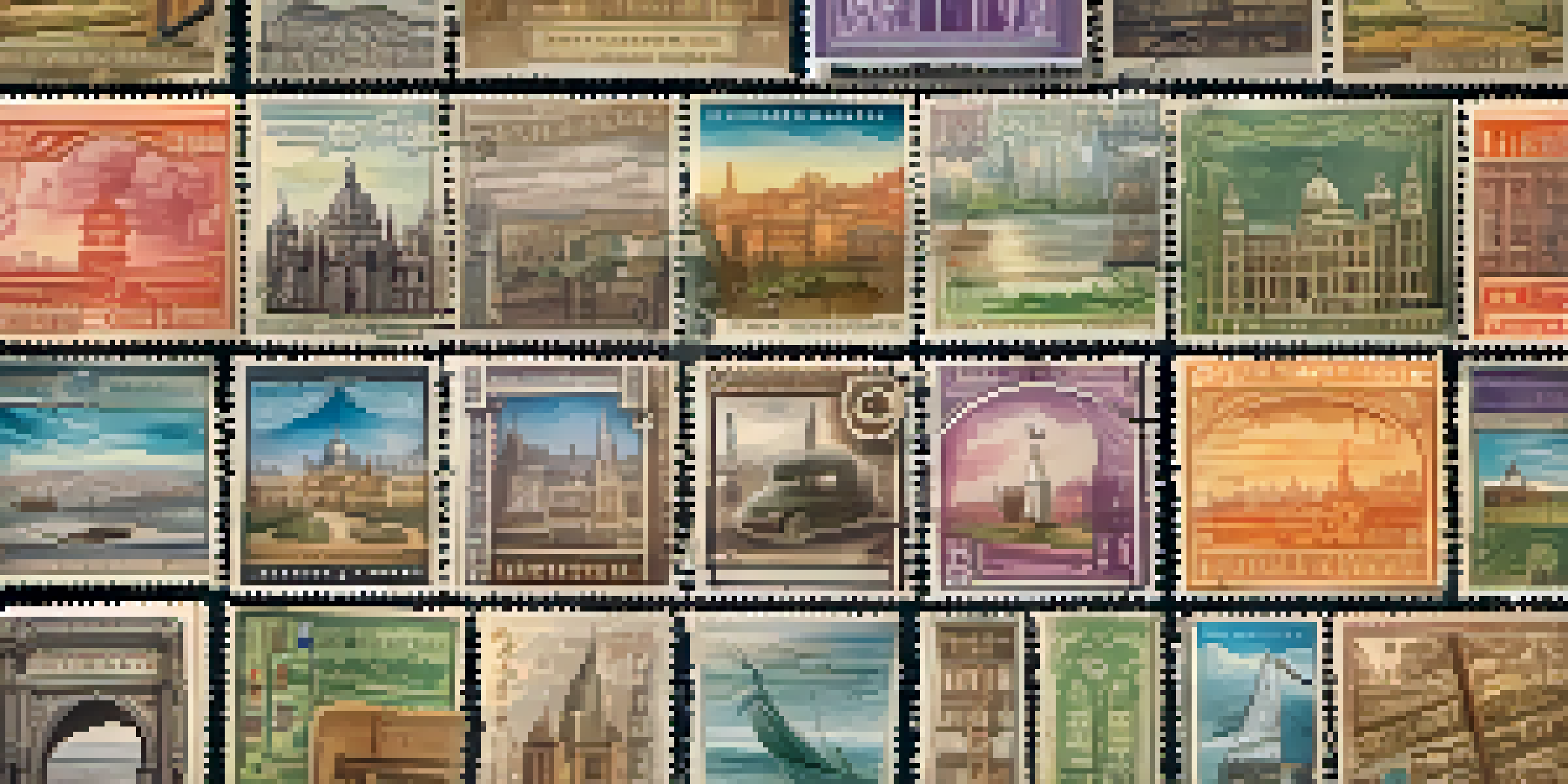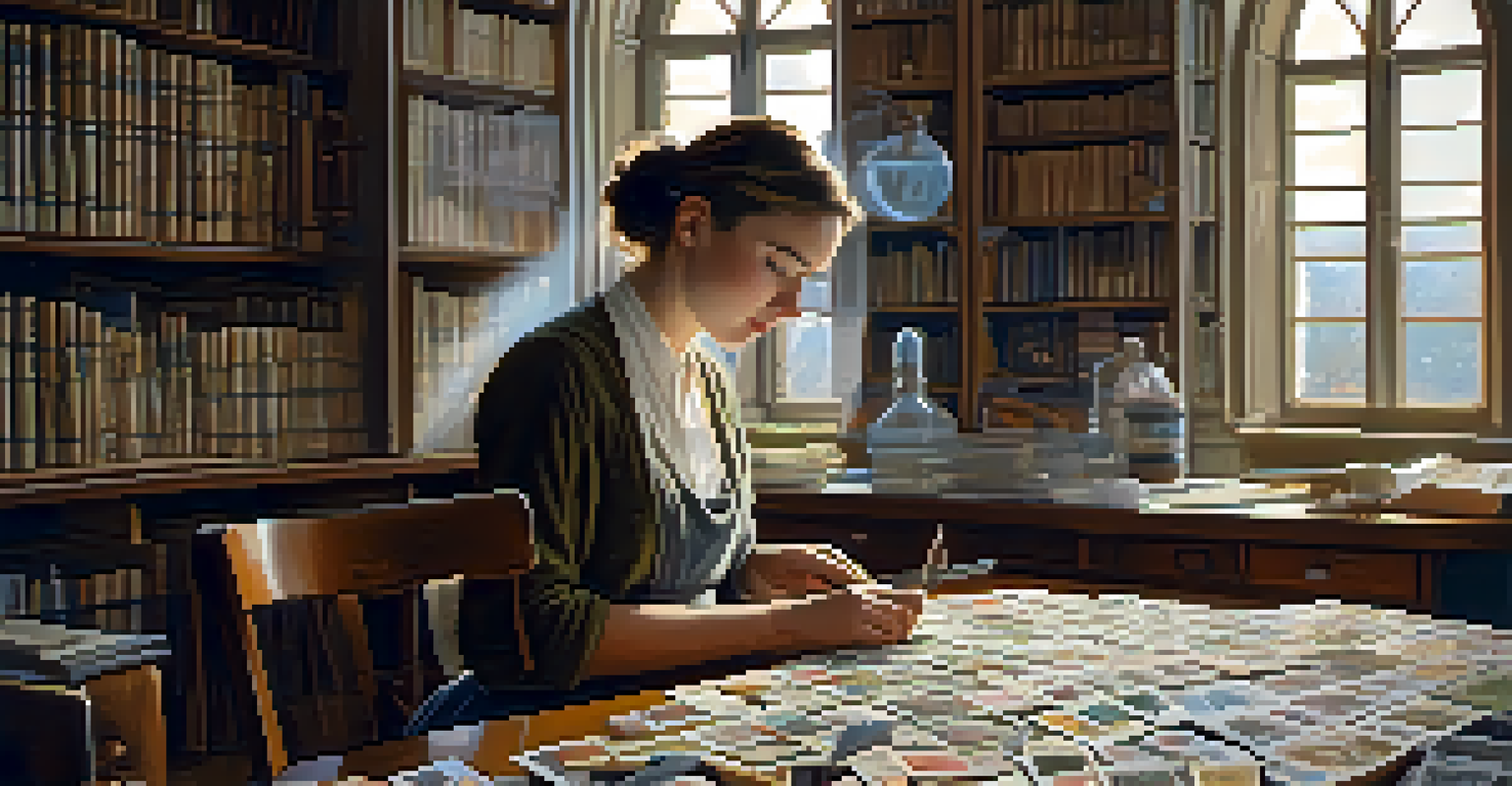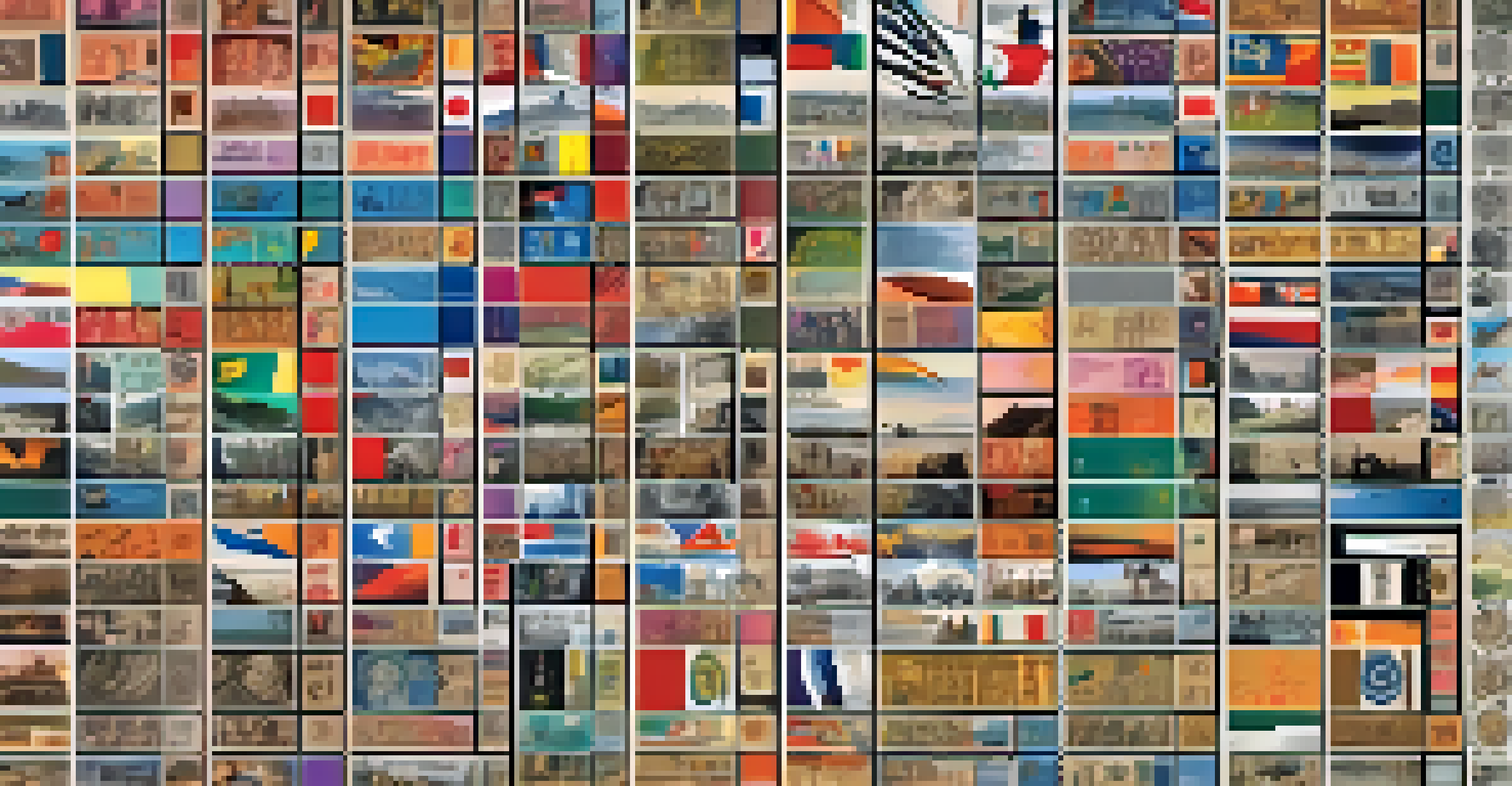The Connection Between Stamps and Philately

What Are Stamps and Their Importance?
Stamps are small pieces of paper, often adorned with intricate designs, that serve as proof of postage. They play a crucial role in the postal system, allowing letters and parcels to be sent across the globe. Beyond their functional use, stamps often carry historical significance and reflect cultural values, making them much more than just postage.
Stamps are the messengers of history.
For example, a stamp featuring a famous landmark can spark interest in that location, encouraging people to learn more about its history and significance. This dual role of stamps—practical and educational—highlights their importance in our daily lives. As we send and receive mail, we often overlook the stories these little pieces of paper tell.
In essence, stamps are gateways to understanding diverse cultures, historical events, and even artistic movements. They provide a tangible link to the past, allowing us to appreciate the evolution of communication over time.
Understanding Philately: More Than Just Collecting
Philately is the study and collection of stamps, but it extends far beyond merely accumulating them. It involves a deep appreciation for the history, art, and stories that stamps represent. Philatelists often research the origins of their stamps, the artists behind the designs, and the historical events they commemorate.

For instance, a philatelist might delve into the significance of a stamp issued during a major world event, learning how it reflected the sentiments of the time. This process transforms collecting into an enriching experience, connecting enthusiasts to the broader narrative of human history. Philately allows individuals to engage with history in a personal and meaningful way.
Stamps as Cultural Artifacts
Stamps reflect the cultural values and historical events of societies, serving as tangible reminders of a nation's identity.
Moreover, philately fosters a sense of community among collectors, who often gather to share their finds and knowledge. This social aspect adds another layer to the hobby, making it not just about the stamps themselves but also about the relationships formed through shared interests.
The Art of Stamp Design: A Creative Process
Stamp design is an art form that requires creativity, historical knowledge, and attention to detail. Designers often collaborate with historians and artists to create stamps that are visually appealing and culturally significant. Each stamp is a miniature work of art, reflecting the essence of the subject it represents.
Collecting stamps is like collecting memories.
For example, a stamp commemorating a national holiday might feature symbols that resonate deeply with a country's identity. The colors, imagery, and even the typography are carefully chosen to convey a message or evoke emotion. This thoughtful process ensures that each stamp tells a unique story.
As collectors seek out specific designs, the artistry of stamps becomes a focal point in philately. Many collectors are drawn to stamps not just for their monetary value but for their aesthetic appeal, leading to a rich dialogue about art and history within the philatelic community.
The Historical Significance of Stamps
Stamps encapsulate moments in history, serving as tangible reminders of past events and figures. From commemorative stamps celebrating significant anniversaries to those honoring influential leaders, each stamp tells a part of our collective story. They provide insight into the values and priorities of different eras, allowing us to reflect on how far we've come.
For instance, stamps issued during wartime often carry powerful messages of hope or patriotism, capturing the sentiments of the populace. Collecting these stamps can be a way for enthusiasts to engage with and understand the complexities of history. It’s a way to preserve memories and honor the past.
Philately Connects History and Art
Philately goes beyond collecting; it involves a deep appreciation for the stories, history, and artistry behind stamps.
In this sense, stamps act as time capsules, inviting future generations to explore the history of their predecessors. By studying stamps, we can gain a deeper appreciation for the interconnectedness of events and the impact they have had on shaping the world we live in today.
Philately as a Reflection of Culture
Stamps are often a reflection of the culture and values of the societies that produce them. They can showcase national pride, significant cultural figures, and important events, providing a snapshot of a country’s identity. Through stamps, we can explore themes of heritage, art, and even social issues.
For instance, stamps honoring cultural festivals or traditional practices highlight the richness of a nation’s heritage. They serve not only as a means of postage but as ambassadors of culture, educating those who encounter them. This cultural exchange can foster understanding and appreciation between different countries and communities.
Furthermore, as societies evolve, so too do their stamps. New issues often reflect contemporary issues, showcasing how a culture adapts and responds to change. Collectors who study these trends can gain valuable insights into the social currents shaping our world.
The Rise of Digital Philately
With the advent of technology, philately has seen a shift towards digital platforms, allowing collectors to connect and share their passions online. Digital philately offers new ways to engage with stamps, from virtual exhibitions to online trading communities. This shift has made it easier for enthusiasts from around the globe to connect, regardless of geographical barriers.
For example, many collectors now participate in online forums and social media groups dedicated to stamp collecting. These platforms provide a space for sharing insights, discoveries, and even advice on caring for stamps. As a result, the philatelic community has become more vibrant and accessible than ever.
Digital Shift in Stamp Collecting
The rise of digital platforms has transformed philately, enabling collectors to connect and share their passion globally.
Additionally, digital tools enable collectors to organize their collections and track the history of their stamps with greater ease. This evolution not only enhances the collecting experience but also attracts a new generation of philatelists eager to explore the world of stamps in innovative ways.
The Future of Stamps and Philately
As we look ahead, the future of stamps and philately remains bright, despite the rise of digital communication. While email and instant messaging have changed how we communicate, the charm of sending a physical letter with a unique stamp endures. Many people still appreciate the personal touch that a handwritten note and a carefully chosen stamp can bring.
Moreover, collectors continue to seek out rare and unique stamps, driven by their passion for history and art. The excitement of finding a long-sought-after stamp or discovering a new design keeps the hobby alive and thriving. As new generations of collectors emerge, they bring fresh perspectives and interests to the field.

In conclusion, the connection between stamps and philately is a rich tapestry of history, culture, and art. As we celebrate this connection, we can look forward to a future where both stamps and the act of collecting them continue to inspire curiosity and foster connections among people worldwide.